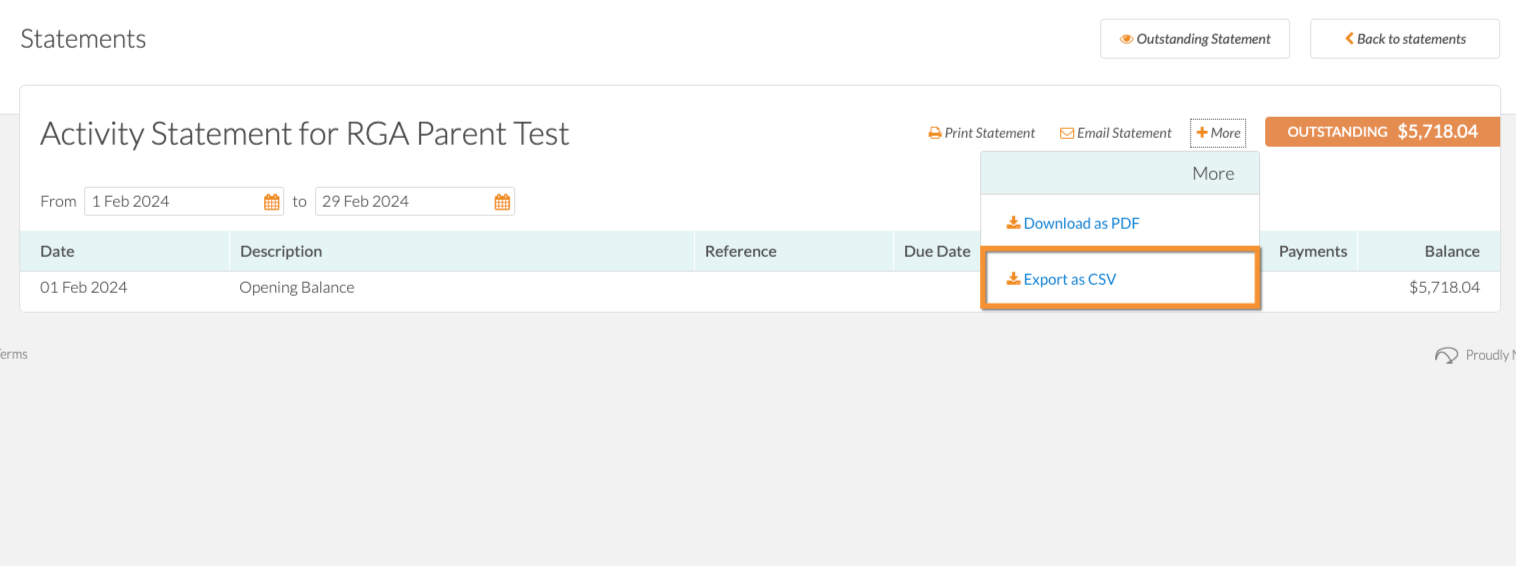Difference Between Activity & Outstanding Statements
Scenarios:
You want to understand the difference between activity and outstanding statements.
This document assumes the following:
You read and understand When & How To Use Activity Statements
You read and understand When & How To Use Outstanding Statements
You read and understand Outstanding Statements View for Parents
You read and understand Activity Statements View For Parents
Statements Overview In Enrolmy
Enrolmy provides two types of statements, an Activity or Outstanding Statement.
An Activity Statement should be sent to billpayers who want to see a financial record of their families' activity on Enrolmy. The financial record will only be emailed to the bill payer of the family and it will include:
Invoices for all children in the family
Credit notes created for all children in the family
Overpayments from Xero that have been applied to Xero-generated invoices
Payments made on invoices
WINZ Credit Notes created for all children in the family
An Outstanding Statement should be sent to billpayers who only want/need to see their outstanding balance. This financial record will only be emailed to the billpayer of the family and it will include;
Outstanding Enrolmy invoices
Overdue Enrolmy invoices
Similarities & Differences Between Activity & Outstanding Statements
Detail | Activity | Outstanding |
|---|---|---|
Will display draft credit notes | No | No |
Will display draft invoices | No | No |
Will display overdue & outstanding invoices  | Yes | Yes |
Will display overdue & outstanding credit notes  | Yes | No |
Will display applied credit notes  | Yes | No |
Will display applied Xero overpayments to Enrolmy generated invoices | Yes | No |
Will display outstanding & overdue Xero generated invoices | No | No |
Will display unapplied Xero generated credit notes .png?inst-v=8926a06b-5d54-49ca-9b5c-025458cee6b8) | Yes | No |
Will display applied Xero generated credit notes .png?inst-v=8926a06b-5d54-49ca-9b5c-025458cee6b8) | Yes | No |
Will display Enrolmy reconciled payments .png?inst-v=8926a06b-5d54-49ca-9b5c-025458cee6b8) | Yes | No |
Individual statements can be exported to CSV  | Yes | Yes |
Great! You now understand the differences between these two statement types!
Last updated:
